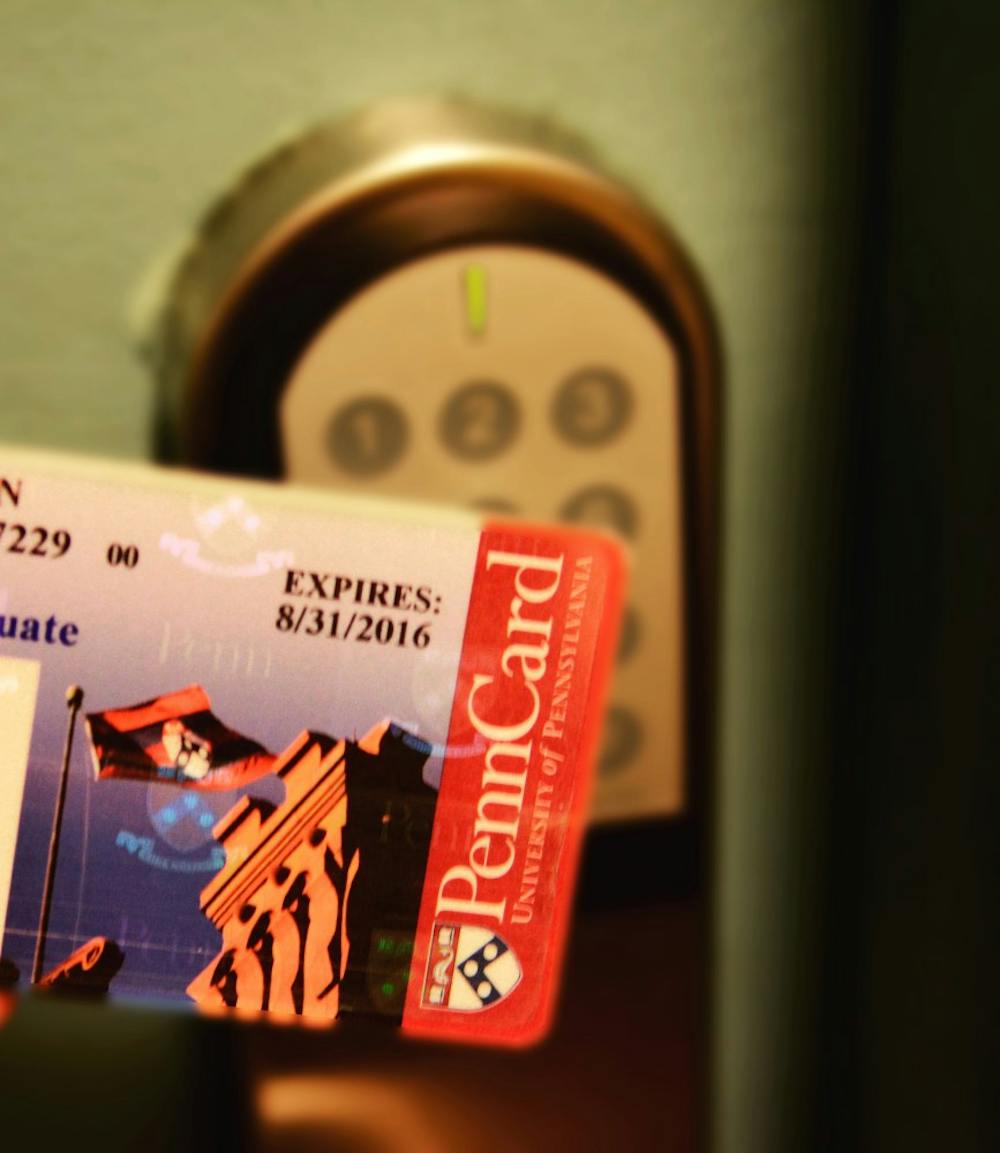Phone, keys, PennCard — now you only need to remember to take two of the three before leaving your room.
Residents in Gregory College House were issued new PennCards last week that can open the doors to their rooms as part of the contactless card pilot system that has been underway in the college house since last summer. This new PennCard was activated Tuesday and performs all the functions of a regular PennCard.
Previously, Gregory residents carried around a “temporary access” key card. Now, they only need their PennCard.
Related: Gregory College House pilots swipeless security system
Radio-frequency identificatio — typically known as RFID — technology is installed in residents’ PennCards via a microchip. To open their rooms, residents tap their cards and enter their four-digit PAC code on new locks on their doors.
However, residents must still tap their cards at a hotspot located by the front desk every 15 days to recharge the card. The next step, Director of Residential Services John Eckman said, is to integrate the hotspot with the turnstile at the entrance to the residence hall, so swiping in would recharge the card.
“At that point, the system will be fully installed in the building,” Eckman said.
Related: PennCards to have ‘contactless’ access to campus buildings
Gregory resident and College sophomore Adam Gross described having to go recharge his card as “a minor little hassle,” compared to the benefits of having an integrated PennCard and room key.
“It’s very nice having this one card that stores everything,” Gross said.
The PennCard with RFID technology also allows the Division of Public Safety to respond more quickly to a lost or misplaced card. Director of Security Technology at DPS Mark Wolfheimer pointed out that if a resident lost a PennCard, the lost card could quickly be deactivated. A lost PennCard would also be easier to replace than a lost key, which might require a locksmith to change the locks on the resident’s door.
“[We’re also] looking at encryption procedures for the contactless card project to enhance the level of security for the software that keeps the system running,” Wolfheimer added.
Another benefit of the RFID technology is that a time limit for access can be set on the cards. This could be useful in issuing temporary access cards for guests that come to Penn for conferences or other events.
The pilot system in Gregory, along with a similar system at the Singh Center for Nanotechnology, is part of a larger University-wide RFID project. Gregory and the Singh Center were chosen so the RFID technology could be tested in both residential and non-residential buildings.
Related: Nanotech building gets tap and go cards
In the coming months, Eckman said Residential Services would evaluate feedback from Gregory residents as well as the operating costs of the system to determine whether the University would like to extend the technology to other buildings.
If the pilot system is successful, the next steps are to implement the keyless entry system in the new college house on Hill Field as well as in Hill College House after it undergoes planned renovations, Eckman said. Going forward, the University may also integrate its RFID system with SEPTA’s contactless “smart card” system that is set to replace the current token system.
“Depending on the results of the pilot, the plan is to start issuing new PennCards starting with the class [of 2018] with the new technology,” Director of Communications and External Relations for Business Services Barbara Lea-Kruger said.
So far, though, “the technology has really performed quite well and to our expectations,” Eckman said.



